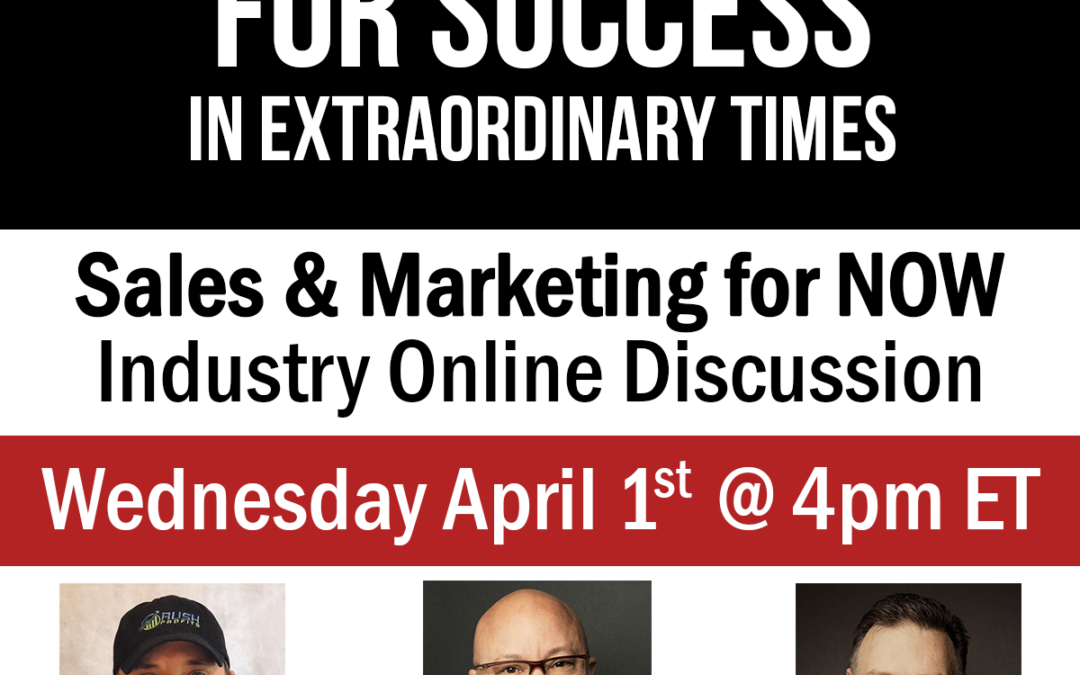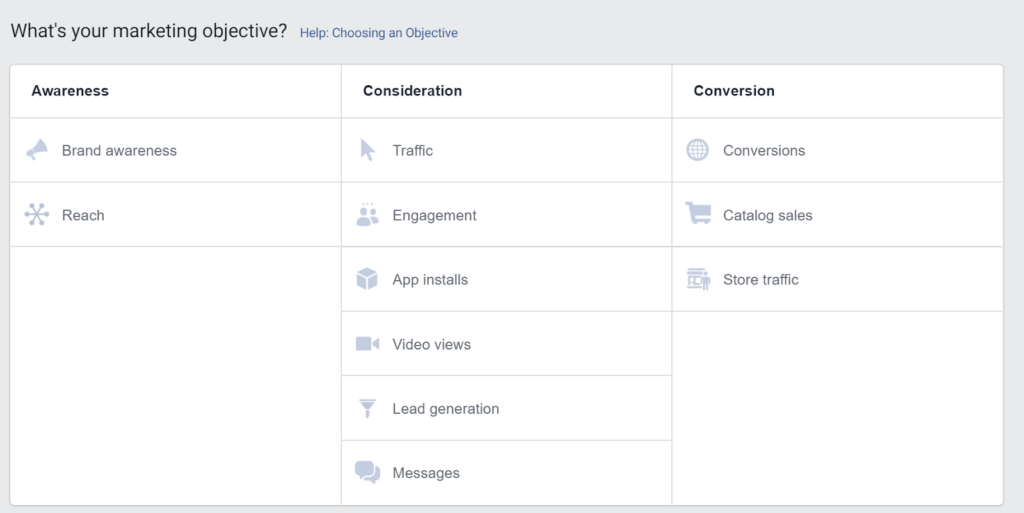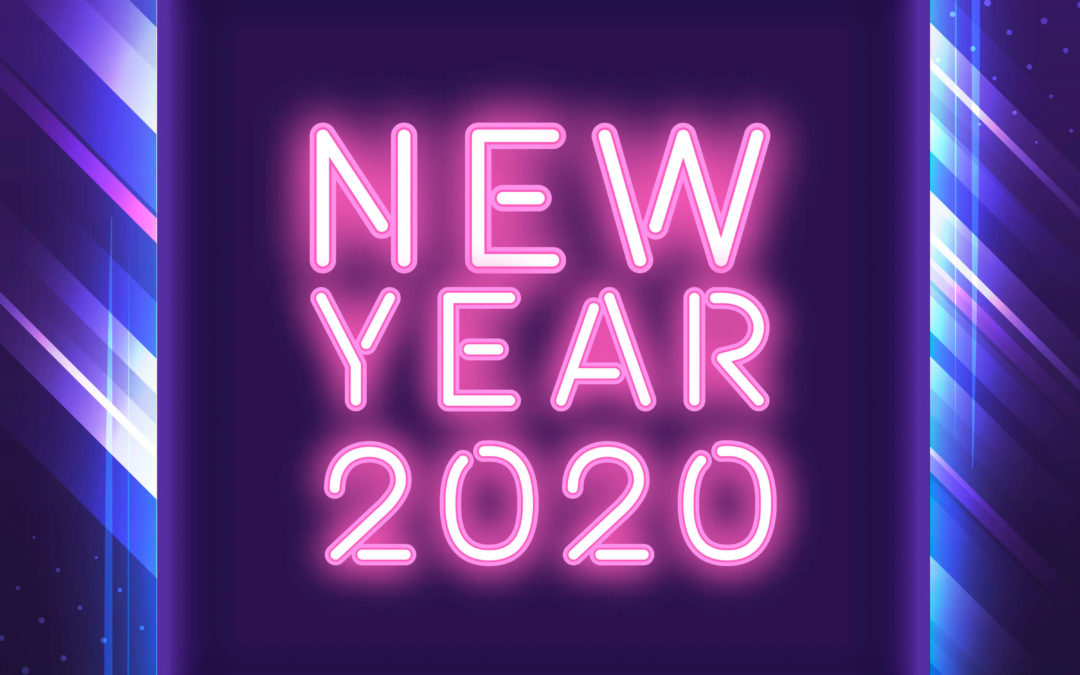
by Fred Brewer | Apr 8, 2020 | Client Tips
Every one of us has been affected by this global pandemic to some degree, and local businesses have been hit especially hard. This is unlike any challenge we’ve ever faced and we’re all in uncharted territory.
That said, we want you to know we stand with you and we’re behind you as you navigate this challenging time. We’ve spent countless hours talking with clients and others in the home services industry over the last few weeks, and we’ve put together some resources to help.
We’ll be updating this blog post as we, and those we know and work with, create more resources – so bookmark this post and check back periodically.
Stay safe, breathe deep, and remember this is just a moment in time. We’ll get through it together!
Sales & marketing strategies for times of crisis
For sales and marketing strategies that work during times of crisis, check out the chimney industry online discussion we hosted with Alan Rush. And don’t forget to check out the resource links below the video!
Tips for leading your business through tough times
Taylor and Carter did an emergency BCP video to talk about how we can better lead our companies through this time. At the end, they’ll also tell you how you can get their book Blue Collar Proud: 10 Principles for Building a Kickass Business You Love for free.
Your restart ready marketing kit
From how to talk to your employees during tough times to templated social posts and phone scripts you can use to communicate with customers right now, you’ll find a little bit of everything here in our Restart Ready Marketing Guide.
Safety + sanitation guide for in-home services
Keeping your employees and customers safe is crucial right now. Clinical microbiologist L. Joseph Ochal III of The Chimney Scientist put together this awesome in-home guide to help service businesses reduce COVID-19 risk while serving customers.
Technician in-home safety compliance strategy
If you are advertising touchless appointments and new safety procedures during in-home appointments, but your techs aren’t following the rules you put in place, there’s going to be a real potential for negative reviews – or worse. Check out this Technician In-Home Safety Compliance Strategy for making sure your technicians are following the safety procedures you have put in place, even when you aren’t on the job site to enforce it.
We’re rooting for you (in the good times and the bad) and we hope these resources help!

by Fred Brewer | Apr 2, 2020 | Client Tips
We love the businesses in the Chimney Industry! Part of our effort to serve this industry during the COVID-19 outbreak in the US has been to share sales and marketing strategies that work during these extraordinary times. We did an online discussion on April 1, 2020 between industry experts Taylor Hill and Carter Harkins (co-founders of Spark Marketer) and Alan Rush (owner Rush Profits). If you were not able to join the call, here is the video of the webinar discussion. We hope it is useful to you as you navigate changes and decisions in your business right now.
Resource links shared during the presentation

by Fred Brewer | Feb 28, 2020 | Client Tips, Facebook
Facebook and Instagram ads not performing as you expected? Not to worry, because we’re sharing our Facebook team’s top tips for troubleshooting and fixing poor ad performance.
If you want your ads performance to improve or you’ve noticed that your ads performance has changed drastically, these are the things you want to check:
- Are you using the right type of campaign for your goals?
- Is your targeting correct?
- Is there a problem with your budget?
- Has Facebook flagged any of your campaigns?
- Is your frequency too high?
- What’s your relevancy score?
- Has the competition ramped up?
#1 Are you using the right type of campaign for your goals?
If your ads aren’t doing well, the very first thing you need to look at is whether or not you’re using the right campaign. Does your objective match your goals?
Facebook has three different marketing objectives that each of their campaign types fall into: Awareness, Consideration, and Conversion.
Awareness includes brand awareness and reach campaigns.
This is the marketing objective you would choose if you were trying to get your company out in front of as many people as possible or in front of people that are best suited to what you’re offering.
Think: spreading the word.
Consideration includes traffic, engagement, video views, and any type of campaign that is designed to get the viewer to think about purchasing from you.
Conversion covers any type of campaign that’s designed to get those who see your ads to purchase from your brand, sign up for a webinar, or take whatever action it is that you consider your “end goal.”

Why does it matter if your campaign objective matches your goals?
Let’s say you want to drive store visits with your ads, but you’re using a traffic campaign. Well, you won’t see the end results you’re looking for.
Here’s why: A traffic campaign drives more traffic to your website, not your store.
In this case, you’d be better off with a conversion campaign that features ads with offers or incentives for visiting your store.
Make sense?
#2 Is your targeting correct?
The second thing you’d want to look at is your targeting.
When we talk about targeting with ads, we mean your audience. Who is in the audience you’re targeting with your ads? Is your audience large enough?
Facebook will show warnings like, “Your audience is too small,” or “Your audience is too broad,” and those things do affect performance.
So if you’re running the right type of campaign but you’re still not seeing the results you’d like to see, take a look at your audience and make sure you’re targeting the right people.
#3 Is there a problem with your budget?
The next thing to check is: is your budget feeding out?
While it’s not the only option, most people will be using a daily spend for their ads (for example: $5/day).
Now, let’s say you’re spending $20 a day and you’re thinking, “Wow, my campaigns are just not working.” If it’s budget-related you’re either:
- Not spending enough.
- Miscalculating your reach.
Let’s address spend first.
Let’s say your cost per result for a lead gen campaign is $25 and you’re spending a daily budget of $20…
Well, Facebook cannot get you a lead in one day with that budget. It needs two days worth of budget to get you a lead with that lead cost and that daily spend.
To see if this is the problem with your ads performance, you need to look at what your cost per result is and what you’re spending daily.
You might want to only spend $5/day, but if a lead in your industry costs more than that and you’re not willing to spend it, you’re wasting your money.
Facebook has to match industry standards and they can’t give you a lead for $5/day just because that’s what you want.
So if the average plumbing lead costs about $80, you need to be willing to spend at least $80/day or accept that you’re only going to get one lead every several days.
Now, let’s talk about your reach.
You may think that your reach is really wide and your budget will go a long way — but you could be wrong.
For example, you may think it’ll be $0.50 to $1.50 per lead, but Facebook may be saying something different, depending on the day.
So you need to look at the estimated daily reach. If that’s not lining up with what you’re getting in your results, then it’s time to switch campaigns, adjust your budget, and switch up some copy and headlines.
If it is matching, then Facebook is doing the best it can with what you’re giving it.
#4 Has Facebook flagged any of your campaigns?
Still not sure what’s affecting your ads performance? Then it’s time to look for any red flags (pun absolutely intended).
When you look at your dashboard, do you see any yellow or red triangles next to your ad sets, your ads, or your campaigns?
If you have a red triangle, you either need to fix that ad/ad set/campaign, or delete it.
Why delete? Even though that ad might be turned off, Facebook Ads Manager sees in there and can hold that against you in the long-run. So if you can’t fix it, get rid of it!
If you have a yellow triangle, read it and take action!
The nice thing about Facebook Ads Manager is that it tells you why it’s flagging something, so you can fix it.
And if you don’t understand what it’s saying, you can always go in and submit a request that says, “Hey, I don’t really know what this means,” or “Hey, I don’t agree with this.”
Flags can get overturned, but you can’t just ignore them.
#5 Is your frequency too high?
Let’s say your ads were running just fine for a couple of weeks or a month or two, and then all of the sudden, performance plummeted.
Chances are, your frequency is too high. Frequency means how many times a person has seen that specific ad in the time that it’s been running.
Why is too high of a frequency bad? It means people aren’t engaging with your ad anymore because they’ve seen it so many times.
What’s a good rule of thumb for frequency?
If your frequency is at or over four and your ads have started to decrease in results or increase in costs, it’s time to switch those ads out or update them.
You can keep the same campaign, you can even keep the same ad set, but you need to keep fresh ads coming in there.
#6 What’s your relevancy score?
If frequency is down and cost doesn’t seem too ridiculously high, but you’re just not seeing the results you hoped for, look at your relevancy scores.
Relevancy scores are broken down into three parts:
- Quality ranking — This is determined by the feedback on your ad in comparison to other ads going to the same audience. Are people liking it?
- Engagement ranking — This is determined by looking at how people are engaging with your ads. Are they getting a lot of likes, comments, clicks, shares, etc.?
- Conversion ranking — This is determined by looking at whether or not your ads are achieving the goals you’ve set for them. For example, if you’re running a traffic campaign, is this ad bringing more people to your site? If you’re running a conversion campaign, is the ad getting conversions and purchases?
If quality, engagement, and conversion rankings are low, and Facebook is saying your ads are in the bottom 25% of ads, chances are your ads just aren’t being shown, and people aren’t liking or engaging with the message you’re putting out there.
If this is the case, you need to completely overhaul your headlines, your copy, your videos, and your images, and get something out there that people really care about and want to engage with.
#7 Has the competition ramped up?
If you’re freaking out because your Facebook or Instagram ad costs just skyrocketed and you don’t know why, look at CPM. CPM = cost per thousand impressions.
If this number is high, it typically means that your competition has increased on Facebook or Instagram, and indicates that more people are targeting the same audience you’re targeting.
A good average CPM is between $5 and $15.
That said, during the holidays, you can expect a normal CPM to be $25+ because more people are typically vying for your audience’s attention during the holidays.
If it’s not holiday season and you have a really high CPM, that means you have a super competitive audience and it’s time to go back into your audience and see if you can adjust your targeting.
See if you can target people who are a good fit for your business in a different way, so that you can get those costs lower.
For example, you may use a lookalike audience instead of interest targeting, or you may focus on retargeting instead of cold audiences.
You’re still getting to the same people, you’re just going about it in a different, more cost-effective way.
Hope this post helps!

by Fred Brewer | Feb 15, 2020 | Client Tips
What is the first thing you think of when you picture the ideal website for your company? We know the most important selling points lie within the content, but vibrant and crisp photos are what will draw users in and leave them actually wanting to continue through the pages of your website.
Product images, before and after images of the services you provide, and even a snapshot of your team will allow potential customers to get a glimpse of what they can expect when choosing to reach out to your company.
Luckily for all of us, it doesn’t take a degree in photography to get visually appealing photos that show the hard work that was put in to get the final result. In this post, we will dive a little deeper into a few tricks and tips to up your picture taking game and bring your website to new heights.
Tip #1: Don’t Sweat The Equipment
I think we can all agree that technology is nothing short of amazing. Nowadays, everyone has a phone, planner, entertainment system, and yes, a high quality camera, all in one device that fits in their back pocket.
While having a separate DSLR camera is nice and will still get the job done, it simply isn’t a necessity anymore. Most of the smartphones that came out in 2019 boast up to a 12 megapixel rear camera. This equals out to roughly 6 times the resolution needed for a high definition image on a computer screen, which means there isn’t much excuse for a tiny, blurry photo on your website.
Of course, no matter how nice the camera is, in your phone or otherwise, it can only be as good as the person behind it.
Again, as designers, we aren’t expecting Annie Leibovitz levels of photography prowess when requesting images for your website. We are here to help you! All images that are sent in can always be cropped, color corrected, and retouched as needed to make sure the message gets across quickly and clearly.

Tip #2: Lighting Is Key
Any social media influencer worth their salt knows about the magical “golden hour” when it comes to taking the perfect, glowing selfie. This is only one example of how lighting in your photos can make all the difference between drab and dreary or vivid and vibrant.
Natural sunlight in the early morning or late afternoon, when the sunlight is a little more diffused, are the ideal times to get an even source of light for your photos. However, even when the lighting is not ideal, there are still ways to work around it.
If you are working with bright light around your subject, you want to be sure that your photos don’t become overexposed and full of glare. Though it sounds counter intuitive, this could be a good time to use the flash function to balance out any harsh light and fill in any shadows that it creates. Creating more even light distribution will ensure that you don’t lose detail throughout the subject of the photo.
Alternatively, if you are working in a dark area, there are tools to magnify what little light is available. You can use a reflector, mirror, or even a large, white poster board or curtain to help reflect light back towards your subject.
In the examples below, you can see that using flash to compensate for the darkness of the room creates heavy shadows and a glare on the background.

Tip #3: Consider Your Composition
As crucial as lighting is in a photo, it barely matters if the composition is still unappealing to the viewer. Extraneous clutter, uneven landscapes, and awkward angles will all detract from what could otherwise be a fantastic photo.
One of the most important things to remember when taking a photo is the rule of thirds. Imagine a tic tac toe board across the image. The focal points of your image should be along the intersections of the grid. The rest of the photo then allows the viewer some space for their eyes to relax, rather than distracting from what is essential in the image.
Another huge part of creating good composition is enlisting hierarchy. This means creating a flow throughout your image to guide the viewer’s eye to what is important.
For example, looking at our flamingo friend below, we can see that when we have a level horizon line, we use the rule of thirds, and there are easy to follow lines, it is a much more pleasing image.


Why Is This Necessary?
Think about the years you’ve put into making a beautiful product or being able to perform a perfect service. Now imagine that it isn’t being highlighted on your website or is being done so poorly. If what you are saying about the quality of your work is not being showcased to potential customers in an easily digestible way, why should they believe it or even care?
Clean, clear photos help to build trust by showing them something that makes them say, “I want that for my home,” and they know you are able to provide it.
Getting good imagery for your website doesn’t have to be a difficult, daunting task. Keeping these tips and tricks in mind will boost your photography skills and remember, like anything else, practice makes perfect. Of course, your marketing team is also a vital tool in perfecting how your brand is visually represented. We now offer professional photography and video services for your business. Give us a call, we are here to help!

by Fred Brewer | Jan 15, 2020 | Client Tips
Google makes thousands of updates to search every single year. How do you stay on top of the waves when you’re trying to be the best spouse ever, a super parent, and a successful business owner?
Oooh, I’ve got an idea! Make friends with a team of super nerds who spend hours every week testing new things and reading everything there is to read on Google, rankings, and all things SEO.
(Ahem, Spark Marketer.)
We’ve got you covered. Based on our nerd-findings, here are the top 5 SEO and marketing things you should focus on in 2020.
#1 Email
“Email’s dead!” has been cried more times than “The end is near!” But the truth is, email is alive and well.
How alive and well? Oh, I don’t know…let’s ask Emarsys, SaleCycle, OptInMonster, Fluent, DemandGen, eConsultancy, and Campaign Monitor:
- Email reaches about 85% of people. (That’s a waaay better reach than you’ll see with your organic social posts!)
- For every $1 spent on email marketing, you can expect to see $44 ROI.
- 80% of business pros believe that email marketing increases customer retention.
- 59% of people surveyed say marketing emails influence their purchase decisions.
- Marketers who use segmented email campaigns see as much as a 760% increase in revenue.
- 68% of millennials say promo emails have influenced their buying decisions.
- 60% of consumers have made a purchase after receiving a marketing email.
- 60% of consumers prefer email when it comes to receiving promo messages from brands.
So yeah, I guess you could say email is still your best bet for communicating with customers.
Aaaand, email is currently the only communication channel you really own. Facebook owns your Facebook page and Instagram profile. Google owns your Google Business Profile listing. Hell, Google even owns the search results. But you own your email list.
So cherish it and use it to connect with your customers regularly and wisely!
3 bonus tips for sending better, more effective emails:
- There are some words you should definitely avoid using in your subject line if you don’t want your emails to go to spam. Words like: free, money, and reminder. Studies show those can land you in the spam folder faster than Ghallagher can destroy a watermelon.
- Use a familiar send name/email address and be consistent. If your customer doesn’t recognize your email address or name, they’re not going to read your emails. In fact, MailChimp says almost 50% of people will simply report an unfamiliar name or email address as spam. Eek!
- Get personal! Personal greetings make people feel all warm and fuzzy inside. Research shows that when you practice ongoing, personalized communication with your customers, you can expect to see a significant increase in revenue and customer engagement. Plus, your emails are more likely to be opened, which is always a win.
#2 GBP
You may not officially own it, but you need to pay attention to your Google Business Profile. Why? ‘Cause Google loves it and it’s one of the first things your potential customers are going to see in search results.
So first things first: If you haven’t already, claim your GBP listing and start filling out as much info as you can. Set your service area (if applicable), add your website, create Google Posts, answer questions, turn on messaging if you have the means to answer promptly.
Google is always adding and testing new features — some good, some bad — so regularly check in.
We can’t promise you that all your GBP efforts will have the ROI that good email can have, but you should definitely be utilizing everything Google gives you, given that Google has 87.96% of search engine market share.
#3 Reviews
I know, I know, you’re not surprised to see this on the list — or at least you shouldn’t be! Reviews have been growing in importance for local businesses for the last few years, and they’re not going away.
Take a look at these stats from BrightLocal:
- 82% of consumers read reviews when searching for local businesses.
- Consumers read an average of 10 online reviews before feeling like they can trust a local biz.
- 91% of consumers say that positive reviews make them more likely to use a business.
So how do you get more of these trust-building reviews? Start by making your business the best it can be. 5-star service earns 5-star reviews.
Once you know you’re nailing the service and customer experience side of things, go ahead and ask your customers to review you — whether through email, text, face-to-face, or some sort of automated service or platform. Yelp doesn’t allow you to ask your customers for reviews (weirdos), but Google does. So go for it!
#4 Your website
What’s the number one thing that consumers do after reading reviews?
Drumroll…
They visit the company’s website.
So don’t think, just because GBP is like a mini website right there in search results, that you can forget about your website. It’s still super important!
Here’s a quick cheat sheet on what makes a good website in 2020:
- Secure. If you haven’t made the switch from http to https, the time is now. Hop to it!
- Mobile-friendly. It’s a mobile-first world and something like half of searches are performed on mobile. So if you have a wonky website that looks like trash on a smartphone, it’s time for a revamp.
- Original photos and videos. Your customers don’t want to see Sven, the stock photo “blue collar guy.” They want to see you and your team. So upload high-quality, original photos to your website and show your customers who they’ll be working with. Also, the world can’t get enough video. Consider putting together a quick video to include on your homepage that introduces your company, answers common questions, and gives visitors the feeling that they’ve come to the right place for quality service.
- Helpful, informative content. You own your website, so make it a super helpful and useful resource for your customers. More details to follow…
#5 Content
Your customers are doing more research than ever before, so be their #1 source of information and answers. How do you do that? By creating awesome content on your website, blog, and social profiles.
Your written content doesn’t have to be a specific length. If you can answer a customer’s question in two sentences, do it. If you can provide more value by going deeper and writing more long-form content, do it! The length should fit the topic, need, and platform.
Videos are especially hot right now, and you don’t have to invest in super expensive equipment to create good ones. A smartphone, good lighting, and a tripod are all you really need to get started. So give it a shot.
What should you do in your videos? Answer customer’s questions. Introduce your team. Show them what it’s like to work with you. Show them how to do something or fix something. There are probably a million great ideas for video, so spend some time brainstorming.
Pro Tip: One of the best books I’ve read on creating content is They Ask, You Answer, by Marcus Sheridan. Go get it. For real. I’d give you my copy but almost every page is dog-earred and almost every sentence is highlighted.
There you have it, five things to focus on in 2020, straight from the super nerds at Spark Marketer. Have a great year!









